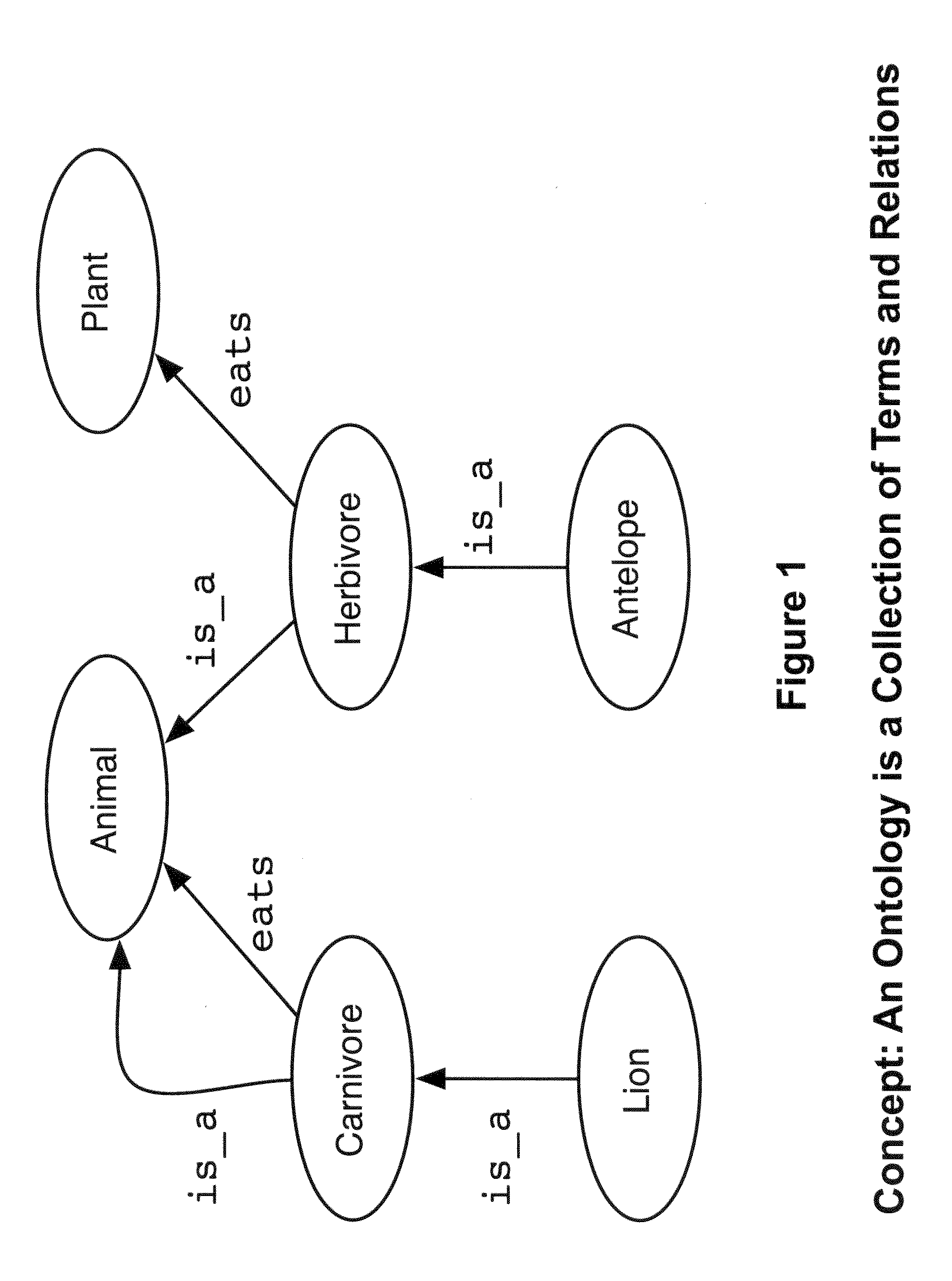Methods and Systems of Automatic Ontology Population
a technology of automatic ontology and population, applied in the field of methods and systems of automatic ontology population, can solve the problems of difficult to reduce information overload, difficult to search the world wide web with semantic ease, and difficult to integrate facts across many papers, etc., to improve the content of existing ontologies.
- Summary
- Abstract
- Description
- Claims
- Application Information
AI Technical Summary
Problems solved by technology
Method used
Image
Examples
example 1
[0161]In biology, the construction of knowledge graphs for key model organisms integrating multiple data types can incorporate explicit models of uncertainty, and include ontologically typed edges and nodes. However, knowledge graphs should exclude conditional interactions.
[0162]One of the most important lessons learned from genome sequencing was the value of the Gene Ontology's (GO) systematic, machine-readable approach to categorizing function. Before GO, it was difficult for a computer to discern that a protein annotated as an “alcohol dehydrogenase” was a kind of oxidoreductase. A similar state of affairs may be currently prevalent in systems biology, and a knowledge graph in accordance with aspects of the invention may prove to be an essential tool. The knowledge graph can derive largely from existing ontologies, something like a more focused analog of the Unified Medical Language System for systems biology. Such an ontology would allow rich kinds of logical and statistical rea...
PUM
 Login to View More
Login to View More Abstract
Description
Claims
Application Information
 Login to View More
Login to View More - R&D
- Intellectual Property
- Life Sciences
- Materials
- Tech Scout
- Unparalleled Data Quality
- Higher Quality Content
- 60% Fewer Hallucinations
Browse by: Latest US Patents, China's latest patents, Technical Efficacy Thesaurus, Application Domain, Technology Topic, Popular Technical Reports.
© 2025 PatSnap. All rights reserved.Legal|Privacy policy|Modern Slavery Act Transparency Statement|Sitemap|About US| Contact US: help@patsnap.com



